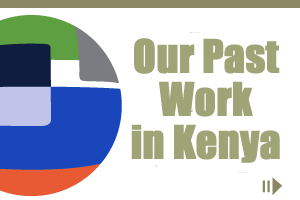By Ida Jooste, Country Director, Internews in Kenya.
What we need to end AIDS is: Money.
What we need to end AIDS is: Condoms.
What we need to end AIDS is: A miracle.
What we need to end AIDS is: Information.
What we need to end AIDS is: Plan to put knowledge in place.
What we need to end AIDS is: A cure.
What we need to end AIDS is: YOU.
On the last day of the conference, answer sheets of a simple questionnaire lay scattered in the hallways. Hand written “solutions” from hundreds of delegates at AIDS 2012. Summaries of the concerns of conference delegates. Among them, world class virologists, nurses, anthropologists, journalists, people living with HIV.
For us journalists, these concerns were the story themes – snapshots of the narratives of the HIV epidemic around the world in July 2012. Like all conferences, AIDS 2012 was organized into tracks – each with its hot topics, story themes.
For the laboratory scientists it was about understanding how a few “elite suppressors” around the world have managed to reverse HIV infection. This would give them clues for the development of vaccines and gene-based interventions.
For clinical scientists, it was about getting a better understanding of when patients should ideally start antiretroviral treatment, and the perplexing fact that AIDS is still a leading cause of death – despite newer, better, more tolerable drugs.
The epidemiology track was upbeat – in part. More and more evidence is emerging that tools for HIV prevention are becoming more effective. Countries like Kenya have shown remarkable results with medical male circumcision; a ground breaking study showed patients who started treatment very early were highly unlikely to transmit HIV to their partners; a few dozen vaginal microbicide trials are currently underway – holding out hope for a better understanding of how antiretroviral drugs can help prevent HIV from entering into the cells in the first place. But there seemed to be as many questions as answers here: prevention tools are effective, but how to ensure that those who need them most, get them? What is the use of solutions if stigma stops people from being tested?
Social scientists were looking at the “structural drivers of the epidemic” - the fact that marginalized groups are not marginal when it comes to HIV risk. Most often, they are most at risk. Sex workers, injecting drug users, transgender people, men who have sex with men – driven underground through stigma, they seldom have the courage to visit doctors and clinics. HIV affects women more than men, the have-nots more than the haves, and there is a 7 billion dollar funding gap.
So do we need a miracle to end AIDS? Do we need more money?
“For the first time, scientists used HIV and cure in the same sentence”, said Anthony Fauci, Director of the National Institute for Allergy and Infectious Diseases. The conference ended with a clear sense that the end of the AIDS epidemic is possible - with sustained financial, political and scientific commitment, and with the understanding that, “though a vaccine or cure is still necessary, scaling up resources and the tools available today has the potential to save millions of lives”, the final news release read. “Only with coordinated efforts to expand HIV prevention and treatment initiatives, integrate HIV programs into broader health services, maintain funding, and improve human rights across vulnerable populations will the international community begin to end the AIDS epidemic”.
That is a long way of saying what we need to end AIDS is: Many things together. The HIV narrative is not a simple story line. How do journalists tell these many story strands, how do they track the plans to put knowledge in place? What kind of information do we need to end AIDS, and why? All kinds, suggests the third South African National HIV Communication Survey (NCS), released this week. “Knowledge of basic facts – like whether HIV can be transmitted from toilet seats or drinking glasses – can be beneficial because it helps to reduce the persistent stigma directed towards those who are HIV positive, which contributes to the spread of the epidemic when people delay testing and treatment because of worries about how they will be viewed”.
The survey also showed that information drives behavior, and produces evidence that exposure to messages about medical male circumcision, for instance, have increased the demand for circumcision. What we need to end AIDS is information.
What we need to end AIDS is: YOU. As I am a journalist, for me that means we need ways of conveying all this information meaningfully: to make sense of science, to probe when money goes missing, to push for the implementation of plans, to marvel at the miracle that we can start talking about a cure, to tell all the stories of what we need to end AIDS.




